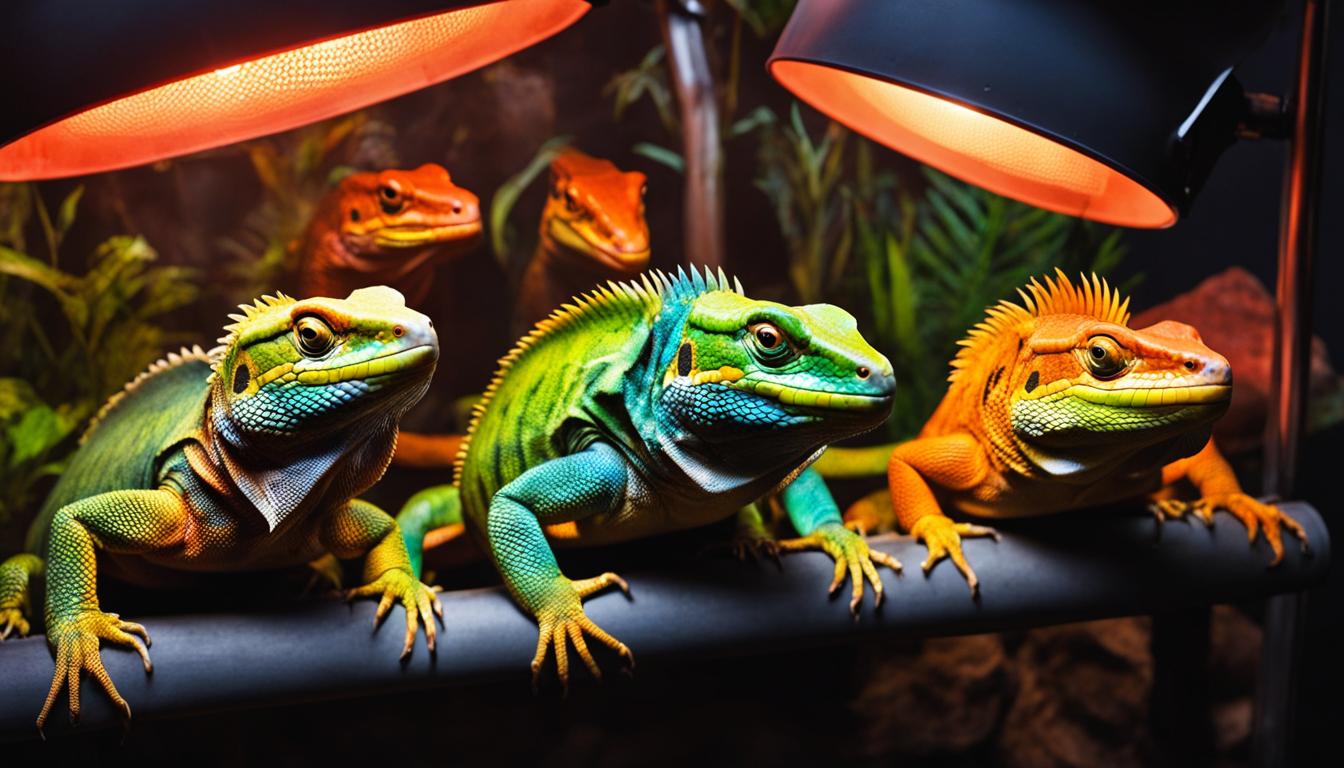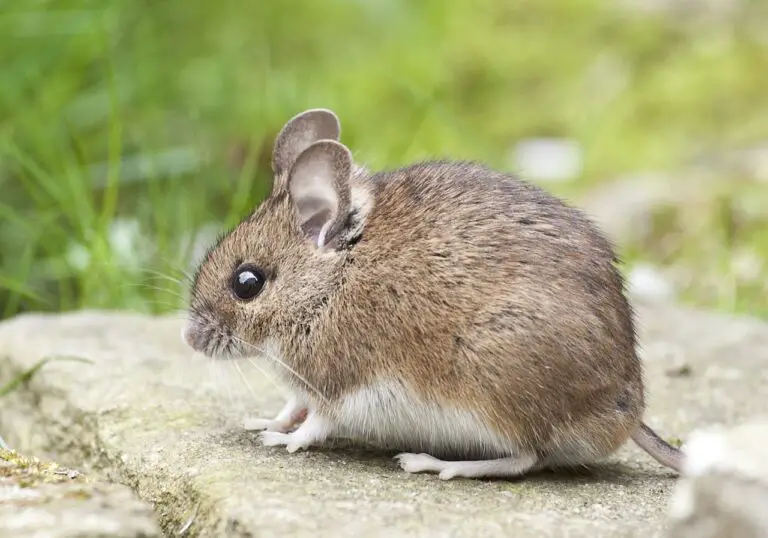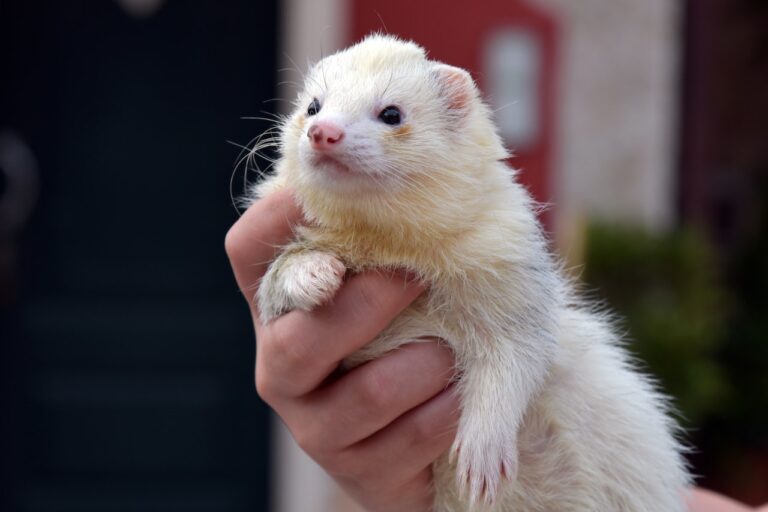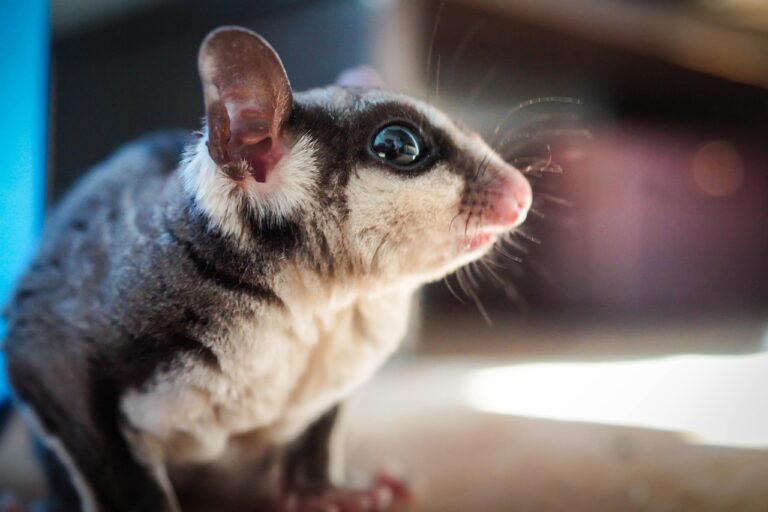Understanding Exotic Reptile Behavior Secrets
Reptiles are mysterious creatures with fascinating behaviors that captivate our curiosity. delving into the realm of exotic reptile behavior offers a glimpse into the intricate world of these extraordinary animals, their genetic adaptations, and their unique survival strategies. From regenerating tails to employing camouflage and mimicry, reptiles have evolved a range of behaviors that enable them to thrive in diverse ecosystems.
This article will explore various aspects of reptile behavior, shedding light on their fascinating world. By understanding reptile behavior, we can gain insights into their natural tendencies and unravel the secrets behind their behaviors that may seem unusual or perplexing at first glance.
Key Takeaways:
- Reptiles have unique genetic adaptations that allow them to survive and thrive in diverse ecosystems.
- Studying reptile behavior provides insights into their intriguing survival strategies.
- Understanding reptile behavior is crucial for responsible ownership and conservation efforts.
- Reptile behaviors, such as basking, feeding habits, and communication, vary among species.
- Appreciating and protecting reptiles and their behaviors contributes to the preservation of ecosystems.
The Financial and Legal Fineprint of Reptile Ownership
Owning a reptile involves more than just the initial purchase. There are financial and legal considerations that require careful planning and understanding. By being aware of these factors, you can ensure the well-being of your reptile and be a responsible owner.
Financial Considerations
When you bring a reptile into your home, there are ongoing expenses that you need to account for. These include:
- Food: Reptiles have specific dietary needs that must be met to ensure their health and longevity. Food expenses can vary depending on the species, size, and any special dietary requirements.
- Habitat Maintenance: Reptiles require a suitable habitat that mimics their natural environment. This includes providing appropriate heat, lighting, substrate, and decor. Ongoing maintenance costs, such as replacing bulbs and cleaning supplies, should also be taken into consideration.
- Veterinary Care: Just like any other pet, reptiles may require medical attention throughout their lives. Regular check-ups, vaccinations, and treatment for any illnesses or injuries can incur costs. It is important to find a veterinarian who specializes in reptiles to ensure your pet receives proper care.
By budgeting for these ongoing expenses, you can provide the best care for your reptile and prevent any financial strain.
Legal Implications
Before getting a reptile, it’s crucial to research the legal requirements and restrictions associated with reptile ownership in your jurisdiction. Some common legal considerations include:
- Permits: Certain reptile species may require permits or licenses to own legally. These permits are usually obtained through wildlife or conservation departments and may involve fees and specific conditions for housing and care.
- Zoning Restrictions: Some areas have specific zoning regulations that determine whether reptiles can be kept as pets. It’s important to familiarize yourself with any zoning restrictions in your area to ensure you are in compliance with local laws.
Understanding and adhering to the legal requirements not only keeps you on the right side of the law but also ensures the welfare and conservation of reptiles in their natural habitats.
Reptile Behavior Specialist Insights:
“Being aware of the financial and legal aspects of reptile ownership is essential. It not only allows you to provide proper care for your reptile but also helps in conservation efforts by discouraging illegal trade and ensuring responsible ownership.”
– Dr. Samantha Miller, Reptile Behavior Specialist
In conclusion, owning a reptile comes with financial obligations and legal responsibilities that need to be understood and respected. By being well-informed, you can provide the best care for your reptile and contribute to the conservation of these fascinating creatures.
Reptile Ownership Costs
| Expense | Estimated Cost Range (per year) |
|---|---|
| Food | $50 – $200+ |
| Habitat Maintenance | $100 – $500+ |
| Veterinary Care | $100 – $500+ |
The Silent Crisis: Reptile Conservation
Reptile conservation is currently facing a silent crisis due to various significant challenges. Habitat destruction, pollution, and illegal trade are threatening the survival of reptile species around the world.
Habitat Destruction: The destruction of natural habitats has a devastating impact on reptile populations. As ecosystems are disrupted, reptiles face the loss of essential resources, such as food and shelter. This disruption in their natural habitats disrupts their natural behaviors and can lead to abnormal reptile behaviors.
Pollution: Pollution, especially through chemical contaminants, poses considerable risks to reptiles. These contaminants can contaminate waterways, poisoning reptiles and destabilizing their natural behaviors. The consequences of pollution can have dire consequences for reptile populations and their overall well-being.
Illegal Trade: Illegal trade of reptiles is another critical threat to their conservation. The exotic reptile trade, driven by demand for exotic reptile habits and unusual reptile behavior, often involves the poaching and smuggling of endangered species. This illegal trade perpetuates exploitation and further endangers reptile populations.
It is crucial to highlight these challenges and raise awareness about the need for reptile conservation efforts. Protecting reptiles and preserving their natural behaviors requires a collective commitment to address these issues and promote responsible practices among individuals, communities, and governments.
By understanding reptiles and their behaviors, we can better appreciate their importance in ecosystems and take necessary steps to ensure their survival. The conservation of reptiles is not just about preserving their physical presence; it is also about safeguarding the unique and often unusual reptile behaviors that contribute to the overall diversity and balance of our natural world.
Cold-Blooded Wonders
Reptiles, with their cold-blooded nature, have evolved fascinating behavioral adaptations to survive and thrive in various environments. Their ability to regulate body temperature is crucial, and they rely on external heat sources for thermoregulation. Basking behavior is one of the ways reptiles raise their body temperature and acquire energy. This behavior involves positioning themselves under the sun or other heat sources to absorb warmth, helping them maintain optimal physiological functions.
Feeding habits among reptiles vary widely, and different species employ specialized hunting techniques suited to their ecological niches. From the stealthy ambush tactics of snakes to the powerful jaws of monitor lizards, each species has developed unique strategies to capture prey efficiently. These feeding behaviors reflect the reptiles’ adaptations to their specific environments and the resources available to them.
Reptiles also exhibit a range of social behaviors, from solitary lifestyles to communal living. Some reptiles, like the python species, choose to live a solitary existence, while others, such as American alligators, form communities with social hierarchies. These social behaviors are influenced by factors like resource availability, reproduction, and defense against predators. Studying these social dynamics provides valuable insights into the complex behaviors and social structures of reptiles.

The Evolution of Reptile Behavior
Over millions of years, reptiles have developed behavioral adaptations that allow them to survive and thrive in their respective habitats. These adaptations are the result of natural selection, where individuals with behaviors that enhance their chances of survival and reproduction are more likely to pass on their genes to future generations.
“Reptiles have remarkable behavioral adaptations that have allowed them to inhabit and thrive in diverse environments. By observing their behavior, we gain deeper insights into the evolutionary processes that shaped their behaviors and the role they play in maintaining ecosystem balance.” – Dr. Elizabeth Williams, Reptile Behavior Specialist
Reptile behavior observations and theories provide valuable information for researchers and conservationists. Understanding how reptiles interact with their environment and other species can aid in developing effective conservation strategies and contributing to the overall understanding of reptile behavior.
| Behavioral Adaptations | Examples |
|---|---|
| Basking Behavior | Turtles and snakes exposing themselves to sunlight to regulate body temperature |
| Specialized Hunting Techniques | Snakes using venom to incapacitate prey |
| Solitary Living | Python species preferring to live alone |
| Communal Living | American alligators forming social hierarchies in groups |
Social Structures and Solitude: Social Behavior
Reptiles, with their diverse species and unique adaptations, exhibit a fascinating range of social behaviors. From solitary lifestyles to communal living, reptiles have developed various strategies for survival. By studying reptile behavior and observing their interactions, researchers gain valuable insights into these creatures’ social dynamics and their impact on ecosystem equilibrium.
Some species, such as certain python species, choose solitude as their way of life. These solitary reptiles have reasons for their solitary lifestyle, which may include specific hunting patterns or the need for uninterrupted space for mating and nesting. On the other end of the spectrum, reptiles like American alligators form tight-knit communities with clear social hierarchies.
“The behavior of reptiles, whether solitary or social, provides a powerful lens through which we can explore the delicate balance of ecosystems,” says Dr. Samantha Johnson, a renowned reptile behavior specialist. “By observing reptiles in their natural habitats, we can better understand how their behaviors contribute to maintaining the ecological harmony.”
H3: Courtship Rituals and Parental Care
Within reptile social structures, courtship rituals and parental care play important roles. Mating rituals among reptiles can be elaborate and intricate, involving displays of vibrant colors, intricate dances, and vocalizations. These rituals serve to attract mates and strengthen social bonds.
Once offspring are produced, reptiles exhibit a range of parental behaviors. Some reptiles, like certain turtle species, lay their eggs and provide no further care. Others, like crocodiles, display exceptional parental care, protecting their young and guiding them through their early lives. The level of parental involvement varies across species, highlighting the diverse strategies reptiles employ to ensure the survival of their offspring.
Examples of Reptile Social Behaviors
| Reptile Species | Social Behavior Pattern |
|---|---|
| American Alligator | Communal living with clear social hierarchies |
| Ball Python | Solitary lifestyle |
| Green Iguana | Loose social structures, congregating in specific areas |
| Chinese Water Dragon | Territorial behavior with occasional tolerance in shared spaces |
Reptile social behavior is influenced by various factors, including habitat availability, resource distribution, and reproductive strategies. By studying and understanding these behaviors, researchers can contribute to the conservation and preservation of reptile populations, ensuring a harmonious coexistence between reptiles and their ecosystems.
*Note: The table provides examples of reptile social behaviors, showcasing different species and their respective behavior patterns. The image inserted above visually represents the topic of studying reptile behavior.
Environmental Clues: Responding to Their World
Reptiles possess remarkable abilities to respond to environmental cues, enabling them to thrive in their respective habitats. Their finely tuned senses provide valuable insights into their behavior and survival strategies.
Reptiles are acutely aware of temperature fluctuations, allowing them to adjust their activities accordingly. They possess the ability to sense even the slightest changes in photoperiod, enabling them to time their behaviors with the seasons. This adaptability ensures their continued success in their ever-changing environments.
Visual acuity is another key attribute that reptiles possess. Their keen eyesight helps them navigate their surroundings, locate potential mates, and locate sources of food. Whether it’s a lizard perched on a sunlit rock or a snake stealthily maneuvering through tall grass, their visual prowess plays a critical role in their daily lives.
While reptiles might not be known for their vocalizations, they do use sounds for communication and defense. From the hissing of a threatened snake to the chirps of certain geckos during territorial disputes, these acoustic cues convey messages to conspecifics and potential adversaries.
“Reptiles have evolved a unique set of sensory tools that help them respond to their surroundings and interact with others. Their ability to detect temperature fluctuations, sense photoperiod changes, rely on visual cues, and produce sounds for communication demonstrates the complexity and sophistication of their behavior.”
The sense of smell is highly developed in reptiles, enabling them to track prey and communicate with conspecifics. Chemical signals released by reptiles convey valuable information about potential mates, territory boundaries, and warning signs to others in their vicinity. Through these olfactory cues, reptiles establish their presence and navigate their social interactions.
Senses and Behavior
The interconnected relationship between reptiles’ senses and behaviors is fascinating to study. Their finely tuned senses inform their behavioral responses, ensuring their survival and reproductive success. These observations provide valuable insights into the intricate web of reptile behavior.
| Reptile Sense | Behavioral Insights |
|---|---|
| Temperature | Reptiles adjust their activities based on temperature fluctuations, optimizing their energy expenditure and ensuring efficient bodily functions. |
| Photoperiod | By sensing changes in daylight duration, reptiles regulate their reproductive cycles, hibernation patterns, and overall activity levels. |
| Visual | Reptiles utilize their keen eyesight to locate potential mates, assess their surroundings, and identify sources of food, territory, and potential threats. |
| Sound | While not as prolific as other animals, reptiles produce sounds for communication, territorial marking, and defense, reinforcing social hierarchies and warning other individuals. |
| Smell | Reptiles rely on chemical signals to communicate with conspecifics, establish territories, and locate food sources. Their sense of smell is crucial for survival and reproduction. |
Studying reptile behavior and their responses to environmental cues provides a deeper understanding of their evolutionary adaptations and ecological roles. The ability to navigate their world, communicate effectively, and survive in diverse habitats showcases the resilience and complexity of reptiles.
Sun-Worshippers: Basking Behavior
Basking behavior in reptiles, such as turtles and snakes, serves two key purposes. It aids in thermoregulation, allowing them to raise their body temperature for efficient digestion and activity. Basking also helps them acquire energy for essential activities like hunting and reproduction. Understanding and studying basking behavior provides valuable insights into reptile behavior patterns and adaptations.

The act of basking involves exposing themselves to direct sunlight or heat sources, typically on rocks, logs, or elevated surfaces. This behavior allows reptiles to absorb radiant heat and redirect it to their bodies, raising their internal temperature to an optimal level. By strategically positioning themselves to maximize sun exposure, reptiles regulate their body temperature, ensuring they can function optimally.
During basking sessions, reptiles exhibit distinct behaviors that are fascinating to observe and research. They may position themselves at specific angles or orient their bodies to absorb the most sunlight. Some reptiles, like turtles, engage in communal basking, where multiple individuals gather together in a shared basking spot, creating a social dynamic.
| Reptile | Basking Behavior |
|---|---|
| Turtles | Turtles often bask in groups, forming “basking parties” on rocks or logs. This behavior allows them to thermoregulate and absorb sunlight for vitamin D synthesis. |
| Snakes | Snakes bask to raise their body temperature, enabling efficient digestion and metabolism. They may choose exposed areas or utilize warm surfaces like road pavement. |
| Lizards | Lizards exhibit varied basking behaviors depending on their species. Some prefer open and elevated perches, while others utilize sun-drenched rocks or tree branches. |
Observing reptiles during their basking behavior provides researchers and enthusiasts with valuable information about their preferences, habitat requirements, and activity patterns. Through careful observation and analysis, researchers can gain insights into the behavior and thermoregulatory needs of different reptile species.
Studying basking behavior also helps scientists understand the adaptations and strategies reptiles have developed to survive in their environments. By analyzing how reptiles optimize their exposure to sunlight and regulate their body temperature, researchers can further enhance their understanding of reptile behavior and contribute to ongoing conservation efforts.
Hunters and Foragers: Feeding Habits
Reptiles are fascinating creatures with diverse feeding habits that are intricately connected to their ecological niches. Their unique hunting techniques and prey choices showcase the remarkable adaptability of these ancient creatures. From camouflaged snakes lying in wait for unsuspecting prey to monitor lizards with powerful jaws capable of crushing their quarry, reptile feeding behaviors are nothing short of extraordinary.
By analyzing reptile behavior patterns in relation to feeding habits, researchers gain valuable insights into their survival strategies and crucial roles within their respective ecosystems. Such analysis helps us better understand the intricate web of life that exists in the reptile world.
Adapting to Ecological Niches
Reptiles have evolved to occupy a wide range of ecological niches, each requiring specific feeding adaptations. Some reptiles, like chameleons, employ stealthy techniques and projectile tongues to capture prey, while others, like crocodiles, utilize ambush tactics and powerful bites to secure their meals.
Let’s explore some examples of reptile feeding habits:
- Snakes: Constrictors, such as pythons, have evolved an incredible feeding strategy. They capture their prey by squeezing them tightly, using their muscular bodies to asphyxiate their victims. Once their prey is immobilized, they consume it whole, gradually digesting it over time. Venomous snakes, on the other hand, use their potent venom to incapacitate their prey before swallowing it.
- Crocodilians: Crocodiles and alligators are notorious for their hunting techniques. They patiently wait for unsuspecting prey to approach the water’s edge before launching a lightning-fast strike, using their powerful jaws to secure the catch. Their diet consists of various aquatic animals, including fish, turtles, birds, and mammals.
- Lizards: Lizards exhibit a wide range of feeding behaviors depending on their species. Some, like the frilled lizard, consume insects and small vertebrates, while others, like iguanas, primarily feed on vegetation. Monitor lizards, known for their exceptional hunting prowess, have a varied diet consisting of birds, small mammals, and other reptiles.
Through careful analysis of reptile behavior and feeding habits, researchers can gain valuable insights into the intricacies of their ecological roles and the delicate balance of nature.
“Reptiles have evolved a fascinating array of feeding habits that highlight their adaptability and efficiency as hunters. Understanding the intricate relationship between behavior and feeding strategies unveils the secrets of their successful survival in diverse environments.”
From the stealthy ambush tactics of snakes to the impressive jaw strength of crocodilians, each reptile’s feeding habits contribute to the ecological balance and ensure their survival. By studying and appreciating these unique characteristics, we can deepen our understanding of the natural world and the multifaceted nature of reptiles.
Communication Codes: Conveying Information
While reptiles may not be as vocal as birds or mammals, they possess unique ways of communicating with one another. Through visual signals, body language, and color changes, reptiles convey crucial information within their social groups. These visual cues play a significant role in establishing dominance, signaling aggression, and facilitating courtship rituals.
Chemical signals are another important means of communication for reptiles, as they possess a keen sense of smell. These chemical cues help reptiles communicate with potential mates, assess their surroundings, and mark territories.
Reptiles also produce sounds, such as clicks, hisses, and chirps, to convey specific messages. These vocalizations are used for territorial marking, warning signals, and defense against predators.
Overall, while reptile communication may differ from that of other animals, their ability to convey information through visual, chemical, and vocal signals demonstrates the complexity and diversity of reptile behavior.
Conclusion
Reptile behavior is a fascinating field of study that offers valuable insights into their unique adaptations, survival strategies, and social interactions. Understanding how reptiles behave is essential for both conservation efforts and responsible ownership. By unraveling the mysteries of their behavior, we can gain a deeper appreciation for these remarkable creatures and work towards protecting them and the ecosystems they inhabit.
Reptile behavior specialists play a vital role in advancing our knowledge of reptile behavior. Through careful observation and research, they provide valuable data that contributes to our understanding of reptile behavioral adaptations. Their expertise helps us make informed decisions about reptile conservation and care, ensuring the well-being of these fascinating creatures.
From their ability to regulate body temperature through basking behavior to their specialized hunting techniques and social structures, reptiles have developed a wide range of behavioral adaptations to thrive in diverse environments. Studying and appreciating these adaptations not only deepens our understanding of reptiles but also highlights the remarkable diversity and complexity of life on our planet. As we continue to explore and uncover the secrets of reptile behavior, we gain a deeper respect for the intricate workings of the natural world.
FAQ
What are some remarkable adaptations that exotic reptiles have?
Exotic reptiles have unique genetic adaptations that allow them to thrive in diverse ecosystems. Some of these adaptations include the ability to regenerate tails, produce venom, and exhibit camouflage and mimicry.
What financial considerations are involved in owning a reptile?
Owning a reptile involves ongoing expenses for food, habitat maintenance, and veterinary care. It is important to consider these financial factors beyond the initial purchase to ensure the well-being of the reptile.
What are some legal implications of reptile ownership?
There may be legal implications such as permits and zoning restrictions that vary by jurisdiction. It is crucial to understand the legal aspects of reptile ownership to ensure responsible ownership and compliance with regulations.
What are the challenges facing reptile conservation?
Reptile conservation is facing significant challenges due to habitat destruction, pollution, and illegal trade. These threats disrupt ecosystems, limit resources for reptiles, pose health risks, and threaten species. Conservation efforts are needed to protect reptiles and preserve their natural behaviors.
How do reptiles regulate their body temperature?
Reptiles are cold-blooded creatures that rely on external heat sources for thermoregulation. Basking behavior, where they expose themselves to sunlight, helps them raise their body temperature and acquire energy.
What are some social behaviors exhibited by reptiles?
Reptiles exhibit a range of social behaviors, from solitary lifestyles to communal living. Some reptiles, like python species, prefer solitary lifestyles, while others, like American alligators, form communities with social hierarchies. Courtship rituals and parental care are also important aspects of reptile social behavior.
How do reptiles communicate with each other?
While not as vocal as birds or mammals, reptiles have their own ways of communication. They use visual signals, such as body language and color changes, to convey information within their social groups. Chemical signals, which they detect through their sense of smell, help them communicate with potential mates and assess their surroundings. Reptiles also produce sounds like clicks and hisses for territorial marking and defense.
What is the purpose of basking behavior in reptiles?
Basking behavior in reptiles serves two purposes. It aids in thermoregulation, allowing them to raise their body temperature for efficient digestion and activity. Basking also helps them acquire energy for essential activities like hunting and reproduction.
How do reptiles capture their prey?
Reptiles employ diverse feeding strategies based on their ecological niches. They use different hunting techniques and have varied prey choices. From the ambush tactics of snakes to the strong jaws of monitor lizards, these behaviors maximize their chances of capturing prey.
How do reptiles convey information to each other?
Although not as vocal as some animals, reptiles have their own ways of communication. They use visual signals, such as body language and color changes, to convey information within their social groups. Chemical signals, detected through their sense of smell, help them communicate with potential mates and assess their surroundings. Reptiles also produce sounds like clicks and hisses for territorial marking and defense.
Why is understanding reptile behavior important?
Studying and understanding reptile behavior provides insights into their unique adaptations, survival strategies, and social interactions. This knowledge is crucial for conservation efforts and responsible ownership, ensuring the well-being of these remarkable creatures and the ecosystems they inhabit.
Source Links
- https://www.graygroupintl.com/blog/reptiles
- https://www.rspca.org.uk/webContent/staticImages/Downloads/ReptileReport.pdf
- https://www.kobipets.com/exotic-pets/shedding-light-on-reptile-behavior/
Peter Stones is the founder of Exotic Pets Place, the leading online resource for exotic pet care information.
With over 10 years of hands-on exotic pet ownership experience, he is deeply passionate about sharing his expertise to help others properly care for their unusual pets.
When he's not writing extensively researched articles or connecting with fellow exotic pet enthusiasts worldwide, you can find Peter at home tending to his own beloved menagerie of exotic animals.




![Exotic Small Mammals Nutritional Guide [Your Ultimate Resource], two guinea pigs eating veggies](https://exoticpetsplace.com/wp-content/uploads/2023/06/Exotic-Small-Mammals-Nutritional-Guide-Your-Ultimate-Resource-two-guinea-pigs-eating-veggies-768x529.jpg)


